Veritas Introduces New Tool Steel for Plane Blades and Chisels

Veritas is set to release a new tool steel dubbed PM-V11.
The internet has been abuzz recently-well, at least that corner occupied by hand tool and tool science nerds, like me. What’s all the hubbub about? Veritas is set to begin using a new tool steel for its plane blades and chisels. It’s called PM-V11. So, why is it a big deal? According Veritas’s Director of Research and Development, it’s “incredibly durable in both planing and chisel applications.” Testing revealed that it holds an edge significantly longer than both O1 and A2, the tool steels in widest use now. So, if you have a PM-V11 chisel or plane blade, you shouldn’t have to sharpen it nearly as often (explanation of testing done to determine toughness and edge retention).
Experienced hand tool users would rightly ask how hard it is to sharpen. If it holds an edge that well, then surely it must be a real pain to sharpen, right? Not so, says Veritas. In terms of how easy it is to sharpen, testing shows it to sharpen a bit faster than A2. The sharpening tests were done on a variety of sharpening media. It’s a good bet that you can continue to use whatever sharpening technique you’re using now.
So, what exactly is PM-V11? Well, the PM stands for “powdered metal.” Here’s how Veritas explains what a powered metal is (original).
To form a PM alloy, constituent metals are melted and mixed together, then atomized, creating very small particles that cool and harden, forming a powder. This powder is screened to ensure consistent particle size, and then heated under pressure to form a billet. The billet is then rolled to the required thickness, ready to process as a conventionally smelted steel would be. The PM process yields a steel with a very fine grain structure that is uniform throughout.
Veritas has done an impressive amount on PM-V11 and many other tool steels and all of the tests suggest that PM-V11 might be the biggest thing to happen to hand tools since Tom Lie-Nielsen decided to give tool making a go (looking back, that seems to be the first step in the current resurgence of hand tools). But really matters is how the new blades and chisel do in the shop. For example, I’d like know how sharp the initial edge is. Sharper than A2 and O1? And how long does it hold that initial edge? What kind of surface does it leave behind? At the moment, we’ve got a PM-V11 plane blade and were sending it out to one of our authors for testing. We’ll have the results in an upcoming issue of the magazine.

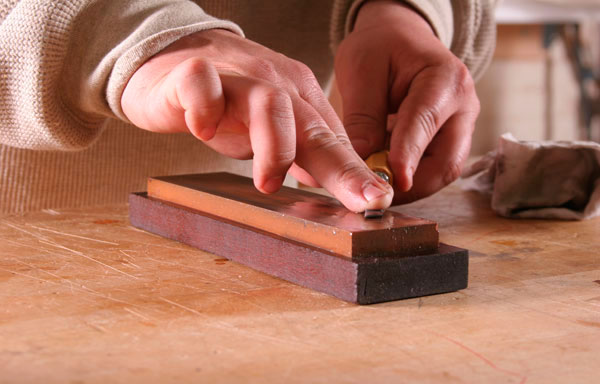


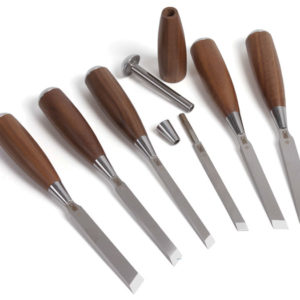
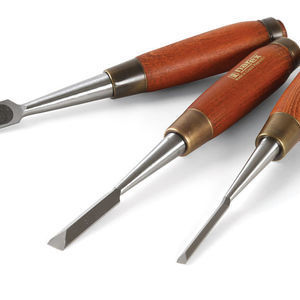
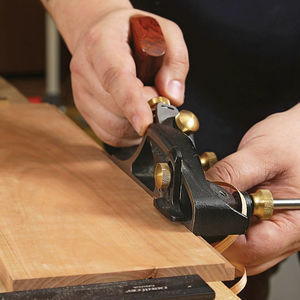
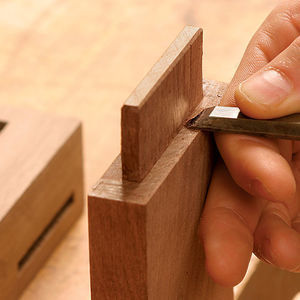











Comments
This is very cool. It's nice to see the current strides in nanotechnology directly reaching woodworkers. And there's perhaps a bit of irony in all of this too. The most *technologically* advanced tools in the woodworker's shop may be hand tools rather than power tools.
I will be extremely anxious to try these out. I have been considering purchasing a BU smooth plane from them and maybe I will hold out and see if they make one with these new irons availible.
I have been hearing these would be on the market already. I don't think that this will be a surprise to the high end blade manufactures Like IBC and Hock. I have had good luck with the IBC blades myself and I would think that IBC has looked into new steel compounds as well. I have a feeling that it Veritas moves any slower the Chinese will beat them to the punch. not to mention what Lie Nelson has in the works.
Some other manufacturers of high wear items made from MIM, metal injection moulding, have had very poor results as the hardened layer can be quite thin.
maddogjoe This is not MIM...not even close.
I am excited to try out this new steel!
I have also heard the Lee Valley will sell replacement blades for other brand planes, like Stanley Baily's. That wil be excelent, since I have a few of these planes. But I think the price would be substantially higher than the best blades available now - Let's see.
It is with high quality products that we, in North America, can be the cheap imports and wee need to this in every field, not only with tools.
The title seems a little disingenuous. Veritas may be testing and using it but doubtfully had anything at all to do with the development of the alloy.
PM is pretty common in turning tools. I have a couple and they do seem to go longer between sharpenings.
This isn't anything radically new. The process of making steel from powdered metals is called sintering and has been in use for quite a while. Veritas probably located suppliers and simply started testing of the available sintered tool steels. The key to their success will, as always, be the performance of the product in the hands of us woodworkers!
I have a Holtey blade in my 9 1/2 block plane and I am pretty sure it is PM (sintered). It is a very nice blade but I’m not sure if it is noticeably better w/respect to the edge than my Lie-Nielsen planes. It is just over 1/8” thick and had to be shoe-horned into the plane. I suspect I will upgrade the plane at some point and keep the blade (it retailed for $85 ish dollars 5-7 years ago). I can tell the difference between my old Stanley 750 chisels and my Lei-Nielsen chisels. I work everything from spruce and cedar to silica laden Anegre and Bloodwood so I am always honing.
Anyway, I cannot afford to swap out all my chisels and plane irons so this is a bit moot for me.
I still believe that it is not about the steel in the metal, but the fool behind the tool.
Everything I could have written has already been posted, so I will close with a query of my own. Is this what they mean by "cutting edge" technology?
PM for cutting tools is not at all new. For example, PM endmills (machining) are a commodity item...you can even buy them on amazon.com.
A zillion PM alloys are available. Veritas has done a service to test a bunch and select one. It's also possible they have worked with a manufacturer to customize an alloy.
Value depends on price of course. In the production machining world, longevity is fairly easy to objectively measure and quantify, so even small differences (eg, 10% longer tool life at 5% higher tool cost) are constantly pursued.
Things are a bit more subjective in wood though.
This isn't exactly new technology. The use of sintered powder metals has been around for over 50 years. I worked at NCR Corporation as a Metallurgical Engineer in 1960, when we were the worlds largest producer of high density powdered metal parts. We made millions of parts for cash registers from PM.
One of the primary applications was for gears that were hardened for wear purposes. No reason that it shouldn't work for chisels and plane irons but it really isn't revolutionary.
If I remember my metalurgy correctly, Carbide (tungsten carbide) is made from powdered metal and carbide has been around since God's Dog was a pup. I have been in or associated with Tool and Die Making since 1959 and carbide was no stranger in our shop.
Hats off the any vendor smart enough to work the obvious
into their own. I'll look forward to the lower cost, better, powder metallurgy (PM) tools when the dust settles in the war between ductile and brittle failure of formed and worked edges.
But the notion that powder metallurgy has anything to do with "atomization" always strikes me as criminal or dishonest or ignorant at best. Sorry but misuse of that word just PMO. The best that can be done with electric torch or plasma spray, even in vacuum is to form droplets of the alloy. Of course there is vapor present, but production of commercial heats of such alloys is not a physical vapor deposition process which proceeds from the vapor, even though much of "vapor" is composed of "clusters" of atoms such as in chemical vapor or physical vapor deposition (CVD or PVD).
So called "powder" metallurgy is actually older than any other, since ore itself is a powder with copious amounts of oxide, silica and carbon compounds, hence the art of refining powder alloy passes through "fine grain" at least twice. And humans have been hammering stuff they pulled out of a fire since before they made their own fires! LOL
The case of zircon sand, represents one of the "pup"s referred to above, since it is among the highest melting and therefore was among the first minerals to precipitate as the earths crust cooled from a liquid. It gives us both zirconium and silicon when the oxygen is removed, just 2 elements that begin to appear when the need for finer grain and higher modulus, yield strength and fracture toughened steels and alloys must be achieved.
All ya'll can find references to PM that go back past Adam, but here is a bibliography I find interesting. It has a German logo crossed out and replaced by a US logo. A neighbor of mine, who is now passed away, came to the US before WWII with some of the first modern powder metallurgy technology listed here, which was of vital interest for the race that was on at that time for cycle fatigue resistance of the hot section blades and vanes of the turbine engine, under development by both sides prior to the outbreak of hostilities.
red
You guys are on the mark. PM has been around for years and tool materials is one of the areas where it excels. You can produce alloys that if produced by meltingm casting and rolling would have limited chemistries due to solidification issues. The PM varieties of tool steels have actually been used by the machining industry for 20 -30 years. I suspect that the PM V11 has vanadium as one of the principle hardening alloys. Carbide router bits are easily shaped and sintered and are PM materials.
How about some independent ASTM test numbers and SEM images of the test edges as sharpened and at the test end life instead of he said they said from Joie Schmaltz?
Eat your heart out, Hank Reardon.
I am familiar with powdered metal in bearing applications, but not as a tool steel. I wonder whether it will prove too brittle for cutting tool applications. My thoughts are that it may be similar to carbide, long wearing, brittle and and easily damaged by dropping. In theory, we should never drop a tools. But the real world intervenes and that theory just doesn't hold.
Log in or create an account to post a comment.
Sign up Log in